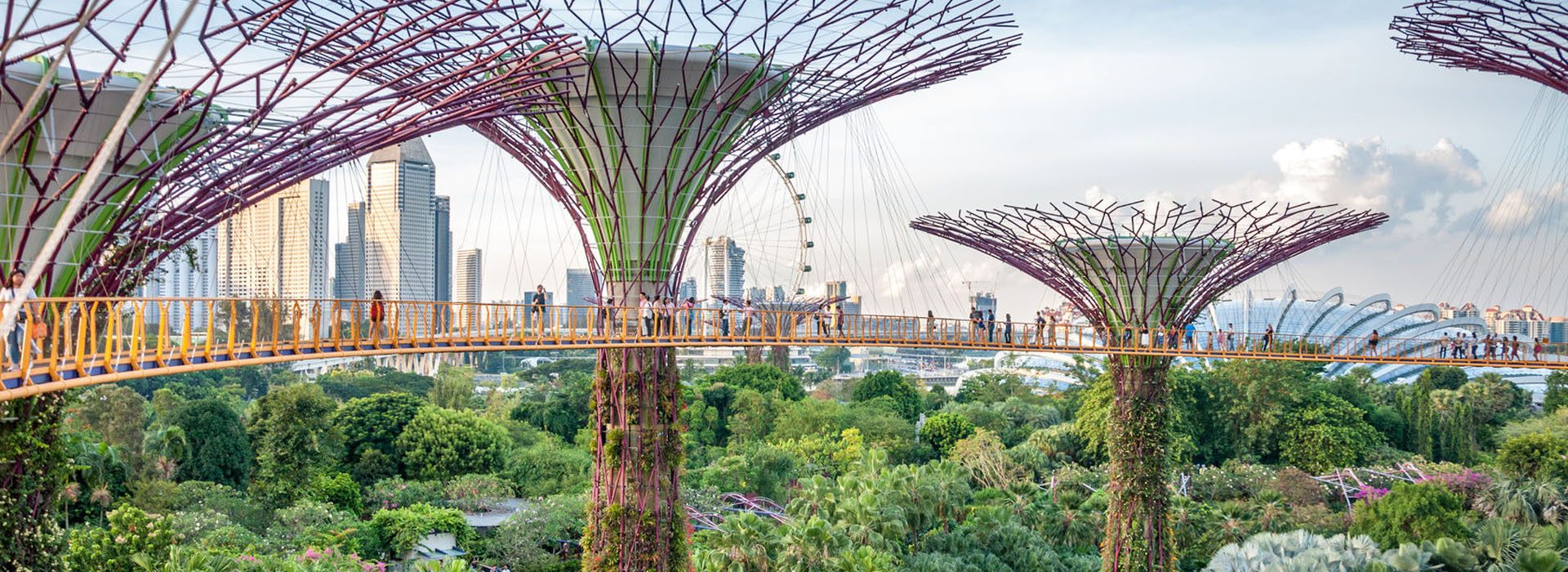Can modern cities be ecological? Can artificial trees delight and purify the air? It turns out that yes! The best testimony that technology and architecture can go hand in hand with ecological solutions for sustainable development has given a small country in Southeast Asia.
Modern architecture straight from Hollywood movies
Singapore is a city-state with little more than 5 million citizens. Despite limited human and financial resources, he is dynamically developing and is focusing on modern solutions and architectural assumptions straight from sci-fi movies. What are we talking about? A spectacular garden in which 18 gigantic ferroconcrete trees grew.
Garden by the Bay is a plant complex that is a multidisciplinary project that combines the world of modern technology, architecture and biology. Created on the surface of over 250 acres, gardens are today a reason for national pride, a place for relaxation, entertainment and science, but above all a model solution for sustainable development and environmental protection, being an example for other countries, including Poland.
Super-spawns – super high, super-strong, supergreen
The most recognizable part of the Singapore garden are the iconic Superdrees. They are ferroconcrete structures resembling in their shape a huge, spread in the upper part of the baobab, with a height of 25 to 50 meters. Superdoors have been designed so that plants can grow on their entire surface, thus creating unusual, vertical gardens.
The structures of some trees have been additionally equipped with photovoltaic panels that capture solar energy – thanks to this, the trees that shine and play at night are self-sufficient. However, this is not the end of attractions and facilities. Tourists visiting Singapore can stroll among the crowns of these modern trees, going for a walk on a 128-meter-long bridge suspended at a height of 22 meters. Those who visited Singapore say that it is worth to be there primarily when the sun sets.
The largest glasshouse in the world and a foggy forest in the center of a big city
Supertrees, although the most effective, are not the only element of the garden complex of Singapore. One of the most interesting parts of it is the world’s largest greenhouse, or Flower Dome. Nearly 200,000 diverse plant species from around the world grow in the entire garden, with a huge portion of them hiding behind the transparent walls of this huge greenhouse. Interestingly, the Flower Dome design allows the collection of rainwater, which is used for irrigation of plants and fills fountains. The whole process is fully automated.
The second, standing near the greenhouse, or Cloud Forest, is a place that imitates the conditions prevailing in the tropic zone, creating an evergreen foggy forest. Inside the greenhouse there is the largest artificial waterfall in the world, which sprays water and supports the growth of tropical plants, creating a characteristic, moist microclimate.
Big, vertical gardens – inspiration for Vistula Terraces 2.0
Garden by the Bay has won many architectural awards. He won, among others World Architecture Festival 2012 competition. It is hardly surprising – modern architectural solutions, ecological energy sources and thousands of flowers, trees and lights make a huge impression. The important thing is that despite the momentum with which the project was made, the architects made every effort to inscribe the landscape of Singapore. The most important thing, however, is that this extraordinary garden is ecological and proves that modern architecture can go hand in hand with sustainable development. Garden by the Bay has become an inspiration for many architects and investors, including the creators of Vistula Terrace 2.0. Observing the latest trends in urban residential architecture, we create modern apartments in the heart of Cacow, within which there will be green vertical gardens and special zones with halotherapy, which will have pro-health and pro-ecological effects.




